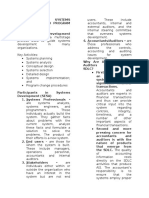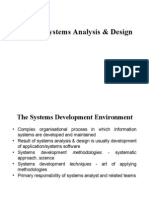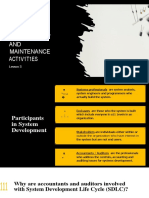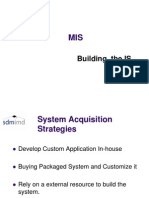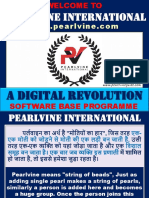0% found this document useful (0 votes)
108 views9 pages005 Systems Development and Program Change Activities
The document discusses the participants and processes involved in systems development. It identifies four main groups that participate: systems professionals, end users, stakeholders, and accountants/auditors. Organizations typically acquire systems through in-house development or purchasing commercial systems. In-house development requires maintaining internal development staff while commercial systems offer benefits like reduced implementation time and cost but lack customization. The systems development life cycle is outlined as having eight phases from planning through maintenance.
Uploaded by
gagahejuniorCopyright
© © All Rights Reserved
We take content rights seriously. If you suspect this is your content, claim it here.
Available Formats
Download as PDF, TXT or read online on Scribd
0% found this document useful (0 votes)
108 views9 pages005 Systems Development and Program Change Activities
The document discusses the participants and processes involved in systems development. It identifies four main groups that participate: systems professionals, end users, stakeholders, and accountants/auditors. Organizations typically acquire systems through in-house development or purchasing commercial systems. In-house development requires maintaining internal development staff while commercial systems offer benefits like reduced implementation time and cost but lack customization. The systems development life cycle is outlined as having eight phases from planning through maintenance.
Uploaded by
gagahejuniorCopyright
© © All Rights Reserved
We take content rights seriously. If you suspect this is your content, claim it here.
Available Formats
Download as PDF, TXT or read online on Scribd
/ 9












